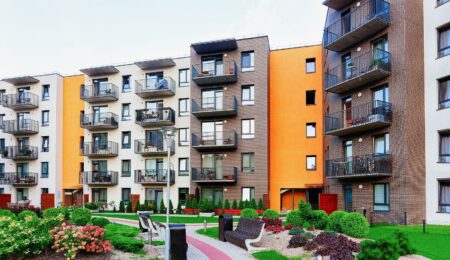Real estate investment is a dynamic journey, and at its core is the quest for a robust return on investment (ROI). Choosing the right property type is a critical decision that significantly influences the potential returns and success of your investment. In this exploration of “Return on Investment Unleashed,” we’ll navigate the diverse landscape of real estate property types, empowering investors to make informed choices that align with their financial goals and strategies.
Understanding Return on Investment (ROI)
Return on Investment, or ROI, is a financial metric that evaluates the profitability of an investment. It is calculated by dividing the net profit from an investment by the initial cost or outlay. In real estate, ROI provides insights into the performance of a property and its potential to generate income and appreciation over time.
The Impact of Property Type on ROI
Different property types offer unique advantages and considerations that directly impact ROI. Investors must consider factors such as rental income potential, property appreciation, maintenance costs, and market demand. Here’s a closer look at how property types influence ROI:
1. Single-Family Homes
Single-family homes often appeal to long-term renters or buyers, making them suitable for stable rental income or resale appreciation. However, maintenance costs and potential vacancies should be considered when calculating ROI for single-family homes.
2. Multi-Family Homes
Multi-family homes, such as duplexes or apartment buildings, can generate multiple streams of rental income. The ability to diversify income sources enhances the stability of cash flow, positively impacting ROI. However, managing multiple units requires effective property management.
3. Commercial Real Estate
Commercial real estate, including retail spaces and office buildings, can provide substantial returns. Lease agreements with businesses often involve longer terms and higher rents. However, commercial properties may be sensitive to economic downturns, impacting ROI during challenging times.
4. Condominiums (Condos) and Townhouses
Condos and townhouses offer a balance between individual ownership and shared amenities. While potential maintenance costs are lower than single-family homes, investors should factor in homeowners association (HOA) fees. The popularity of these properties in urban areas can contribute to higher demand and appreciation.
5. Luxury Properties
Luxury properties cater to high-end markets and can yield substantial returns. However, the pool of potential buyers or renters is more limited. High acquisition and maintenance costs should be carefully weighed against the potential for premium rental rates or resale values.
Choosing the Right Property Type for Your Goals
The right property type for your investment goals depends on various factors, including your risk tolerance, investment horizon, and preferred level of involvement. Here are strategies for aligning property types with specific investment objectives:
1. Rental Income Focus
If your primary goal is steady rental income, multi-family homes or properties in high-demand rental markets may be ideal. Consider the potential for diversifying rental streams and maintaining a low vacancy rate.
2. Long-Term Appreciation
For investors focused on long-term appreciation, single-family homes in stable or up-and-coming neighborhoods might be suitable. Analyze historical trends and growth projections to identify areas with the potential for sustained property value increases.
3. Diversification and Risk Mitigation
Diversifying your real estate portfolio across different property types can help mitigate risks. A combination of residential and commercial properties or a mix of luxury and mid-range properties can provide balance and resilience against market fluctuations.
4. Hands-On vs. Hands-Off Investments
The level of involvement you desire in property management can guide your choice of property type. If you prefer a more hands-off approach, consider properties with lower maintenance requirements, such as condos or professionally managed multi-family units.
Conclusion
Choosing the right property type is a pivotal step in unlocking the full potential of your real estate investment. Whether you’re seeking steady rental income, long-term appreciation, or a balanced portfolio, each property type comes with its unique set of opportunities and challenges. By aligning your investment goals with the characteristics of different property types, you can unleash the full power of return on investment and build a successful and diversified real estate portfolio.





Leave a Reply